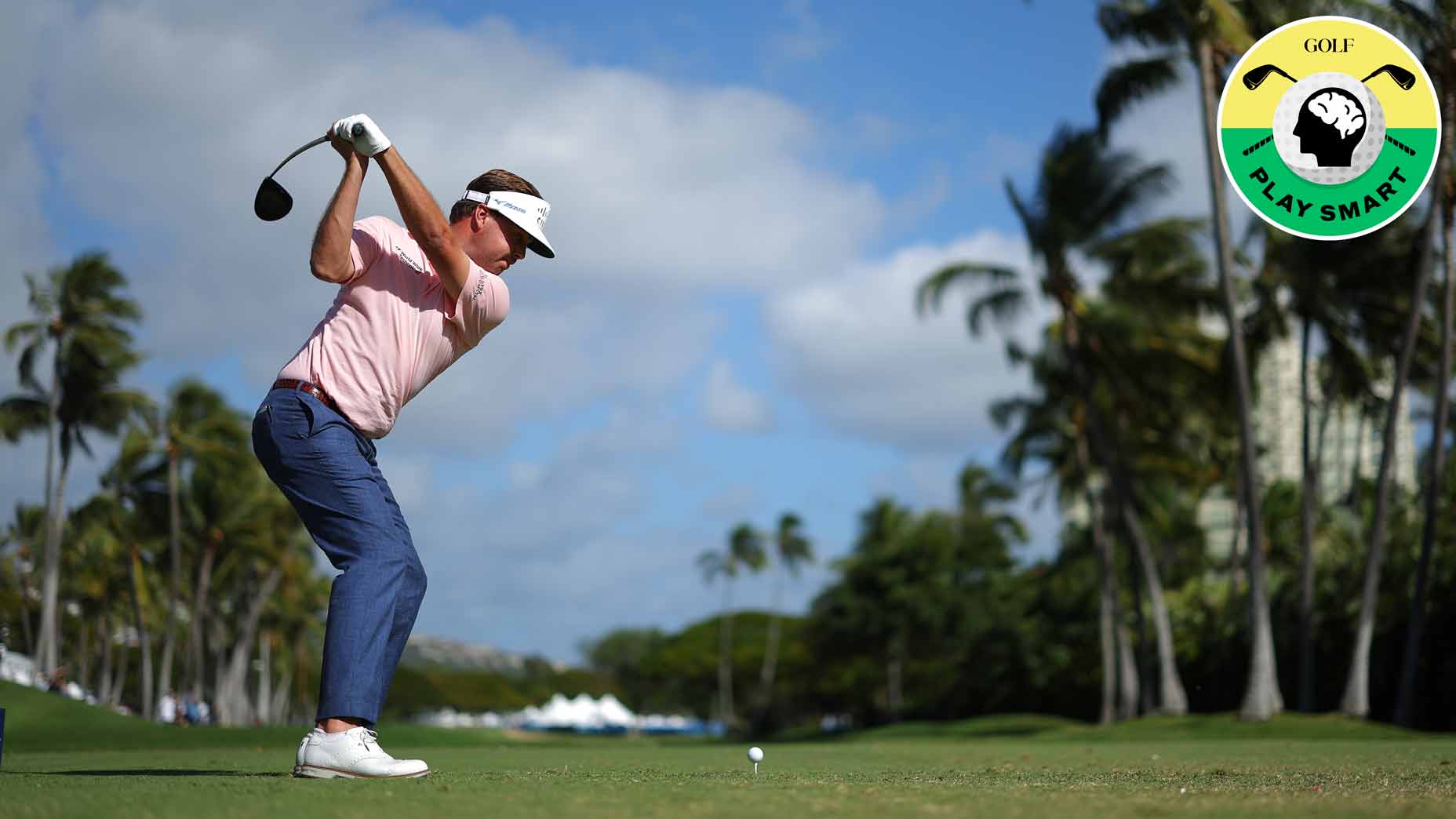Welcome to Play Smart, a regular GOLF.com game-improvement column that will help you play smarter, better golf.
Smart golf is winning golf — and I’m not just saying that to bolster this column. With margins so slim at the highest level, and the talent gap so narrow, the winner each week is typically the one who not only plays the best, but thinks the best, too.
With analytics becoming commonplace on the PGA Tour, players are attacking golf courses in different ways than ever before. Instead of relying on their gut, they’re leaning on numbers to inform every decision.
Removing emotion from decisions is key for maximizing success, but it’t not easy to do. Our emotions can be overpowering, and it can make the smart decision feel like the wrong one — even when the numbers back it up.
Keith Mitchell’s course-management strategy
Keith Mitchell had a heck of a season last year with the driver in his hands, ranking seventh in SG: Off the Tee. But despite that success with the most important weapon in the bag, he couldn’t crack the top 50 in the FedEx Cup standings. The main thing holding him back? Approach play, where he ranked 160th in strokes gained on the season.
Coming into 2024, he knew something needed to change, so he enlisted the help of Mookie DeMoss, an assistant coach at his alma mater, the University of Georgia.
“Definitely looked at some historical data and some stats to see where I needed to improve,” Mitchell said. “We talked a lot about some stuff I need to do. I got to give him a lot credit.”
With the help of DeMoss, Mitchell realized he was lacking in course management. His strokes-gained stats were weak when hitting out of the rough, but he continued to employ a bomb-and-gouge strategy in spite of it.
“Depending on where the pin was, wasn’t looking where the pin was relative to what club I was hitting off the tee on some par-4s — didn’t realize how big of an impact that was,” Mitchell said. “I was really losing some strokes gained [on] approach [shots] based off course management and where I was on — where the pin was on the green and where I was in the fairway rough.”
It’s always easier to get the ball closer to the pin when you have a shorter approach shot, but Mitchell wasn’t factoring in the hole location into this equation. Sure, he was hitting the ball closer to the green, but when he missed the fairway, he couldn’t get any spin on the ball because he was hitting out of the rough. It wasn’t a huge issue when he had green to work with, but when a flag was tucked behind a bunker, he had no chance to get the ball close to the hole.
In his first start of the season at the Sony Open, Mitchell decided to change that tactic. When his dispersion pattern with the driver would put him in the rough on holes with tucked pins, he left the big stick in the bag and opted for a 2-iron instead.
“I remember telling [caddie] Johnny [Limanti] walking off the tee, ‘Man, I just felt like that I was playing scared,'” Mitchell said. “He goes, ‘That was playing smart. That’s what it takes to win a golf tournament.'”
Smart golf means maximizing your chances of success. And in a game with margins as thin as golf, playing the percentages is absolutely essential.
